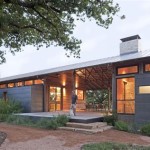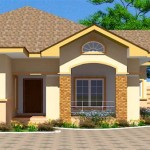Self Build House Plans: A Comprehensive Guide
Building a home from the ground up is a significant undertaking, requiring careful planning and execution. One of the most critical initial steps is choosing the right house plans. Self-build house plans provide homeowners with the flexibility to design and customize their dream homes to perfectly suit their needs and lifestyle. This article serves as a guide to navigating the complexities of self-build house plans.
Key Considerations When Choosing Self-Build House Plans
Several factors influence the selection of appropriate house plans. Careful consideration of these aspects will help ensure the final design aligns with the homeowner's vision and practical requirements.
Budget: Establishing a realistic budget is paramount. Construction costs can escalate quickly, making it crucial to select plans that fit within the predetermined financial constraints. Factor in the cost of land acquisition, materials, labor, permits, and potential unforeseen expenses.
Lifestyle: The chosen house plan should reflect the homeowner's lifestyle. Consider the number of bedrooms and bathrooms required, the desired flow between living spaces, and the inclusion of specialized areas such as a home office, a workshop, or a media room.
Plot Size and Orientation: The dimensions and orientation of the building plot significantly impact the suitable house plans. The layout should maximize the use of available space while considering factors like sunlight exposure, prevailing winds, and views.
Local Regulations: Building codes and zoning regulations vary by location. Ensuring the chosen house plans comply with local ordinances is essential to avoid delays and potential legal issues.
Energy Efficiency: Incorporating energy-efficient features into the house plans can significantly reduce long-term operational costs. Consider elements such as insulation, window placement, and the use of sustainable building materials.
Types of Self-Build House Plans
Various types of self-build house plans are available to cater to different preferences and budgets. Understanding these options can help homeowners make informed decisions.
Stock Plans: Pre-designed stock plans offer a cost-effective and readily available option. These plans can often be customized to some extent to meet specific needs.
Custom Plans: Working with an architect allows for the creation of fully customized house plans tailored to the homeowner's exact specifications. This option offers maximum flexibility but typically comes at a higher cost.
Hybrid Plans: A hybrid approach involves modifying existing stock plans to incorporate custom elements. This provides a balance between affordability and personalization.
Where to Find Self-Build House Plans
Locating suitable house plans requires research and exploring various resources. Homeowners can explore the following avenues:
Online Plan Databases: Numerous websites offer extensive collections of stock house plans, often categorized by style, size, and features. These databases provide a convenient starting point for research.
Architectural Firms: Collaborating with an architect allows for the creation of bespoke house plans. Architects can provide expert advice on design, materials, and construction techniques.
Home Builders and Developers: Some home builders and developers offer pre-designed house plans as part of their services. This option can streamline the building process.
Magazines and Publications: Home design magazines and publications often feature house plans and can serve as a source of inspiration and information.
Evaluating House Plans
Once potential house plans have been identified, careful evaluation is necessary to ensure they meet the homeowner's requirements. Consider the following aspects:
Functionality: Assess the flow and layout of the rooms, considering how the space will be used in daily life. Ensure the plan provides sufficient storage and accommodates furniture placement.
Aesthetics: Evaluate the overall aesthetic appeal of the design, ensuring it aligns with the homeowner's preferences. Consider the architectural style, exterior finishes, and landscaping.
Construction Feasibility: Consult with builders and contractors to assess the practicality of the plans from a construction standpoint. Factor in the complexity of the design and the availability of materials.
Working with Professionals
Embarking on a self-build project often necessitates the involvement of various professionals. Their expertise can ensure the project progresses smoothly and efficiently.
Architects: Architects can assist with design, planning, and regulatory compliance. They can also act as project managers, overseeing the construction process.
Builders and Contractors: Builders and contractors are responsible for the physical construction of the home. Selecting reputable and experienced professionals is crucial.
Engineers and Surveyors: Engineers and surveyors provide technical expertise related to structural integrity, site conditions, and utilities.
Managing the Self-Build Process
Effective project management is essential for a successful self-build project. Careful planning, organization, and communication are key.
Timeline and Scheduling: Developing a realistic timeline and schedule helps keep the project on track and within budget.
Budget Control: Regular monitoring of expenses and adherence to the budget is crucial to avoid cost overruns.
Communication: Maintaining clear communication between all stakeholders, including architects, builders, and suppliers, is crucial for smooth project execution.
Adapting and Modifying Plans
Even with thorough planning, modifications to house plans may become necessary during the construction process. Flexibility and adaptability are essential.
Unforeseen Site Conditions: Unexpected ground conditions or other site-related issues may necessitate adjustments to the plans.
Material Availability: Supply chain disruptions or changes in material availability can require alternative solutions.
Budget Adjustments: Unexpected expenses or changes in budget may require modifications to the plans to stay within financial constraints.

Easy To Build Houses And Floor Plans Houseplans Blog Com

5 Or 6 Bedroom Self Build Timber Frame House Design Plans Floor

5 Bedroom Self Build Timber Frame House Design Plans

Easy To Build Houses And Floor Plans Houseplans Blog Com

Build Your Own House How To Get Started On Self Project

Get Started With Your Self Build Design Fleming Homes

Scandinavian Inspired Self Build It

House Designs And Floor Plans Fleming Homes Self Build Houses Design

Self Build Houses Kits Pennine Timber Frame

My New House Plans Self Build Design Buildhub Org








